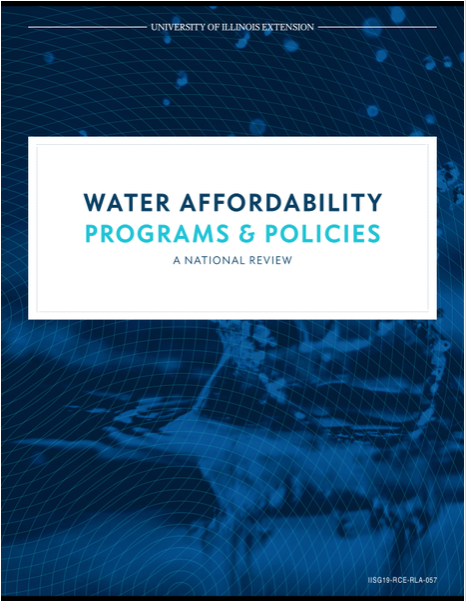Results
File Type: pdf
File Size: 2.46 MB
Year: 2019
Concern over water service affordability has grown in recent years as water bills escalate at a faster pace than the overall cost-of-living.While the cost of water has been rising over the past decade, the ability of consumers to pay for water service has declined. This review examines the definition and measurement of water affordability through a chronological search and presentation of the regulatory and research literature. Results will be used to determine a method for measuring water affordability for the northeastern Illinois region.
Download File
File Type: pdf
File Size: 4.30 MB
Year: 2019
This document provides a review of policies and programs addressing water bill affordability issues and equitable access to water. Five broad strategies are discussed, including: cost reduction, water efficiency, rate design, customer assistance programs, and hard to reach programs. For each solution, a definition, implementation considerations, examples, and potential recommendations are provided. More extensive case studies from a handful of water systems and a brief summary of the literature reviewed is also included. Results will be used to inform a community water affordability technical assistance program.
Download File
File Type: pdf
File Size: 1.32 MB
Year: 2019
This is a fact-sheet designed to educate community members about the value and utility of unwanted medicine disposal programs.
Download File
File Type: pdf
File Size: 126.84 KB
Year: 2019
This table provides a review of the current contaminants of emerging concern (CEC) literature base. This resource provides an overview of the different categories of CECs (e.g., pharmaceuticals, microplastics, pesticides, etc.), examples of chemicals found within those categories, where various CECs have been detected, and the health effects found in both environmental and lab-controlled studies. This information is supported by an extensive list of peer reviewed publications.
Download File
Page 19 of 41
Note: Some older Illinois-Indiana Sea Grant publications have not yet been restructured into ADA compliant formats. We are actively working on this. If you are having difficulty accessing a particular item in one of our databases, please contact iisg@purdue.edu with the name of the item and its URL for further assistance.






